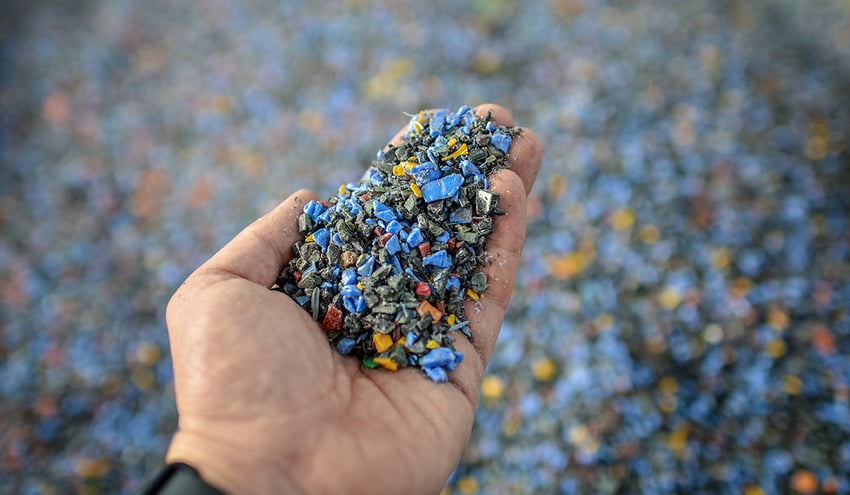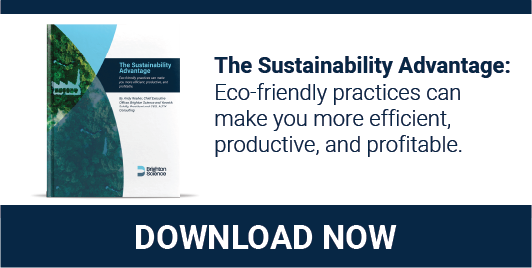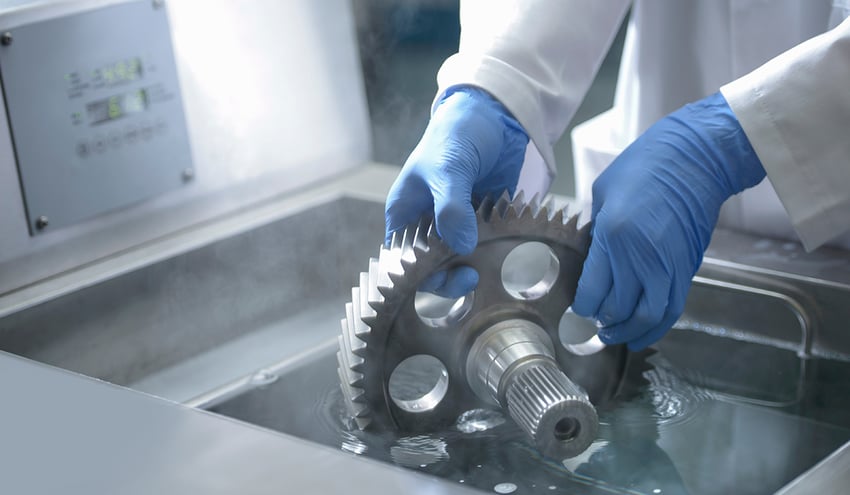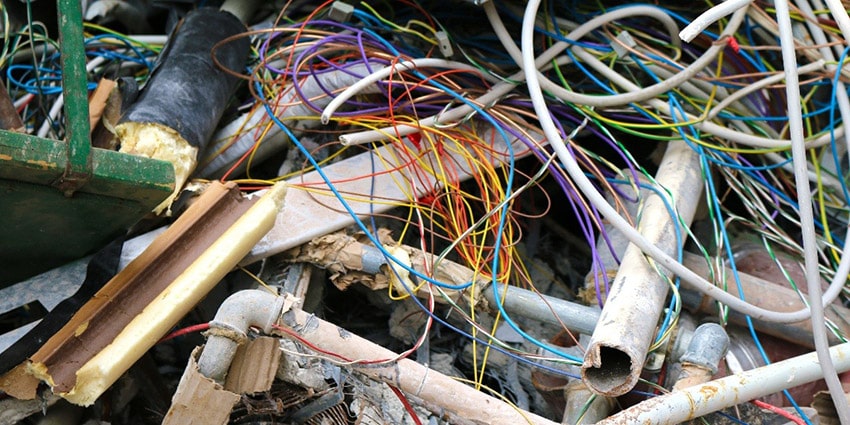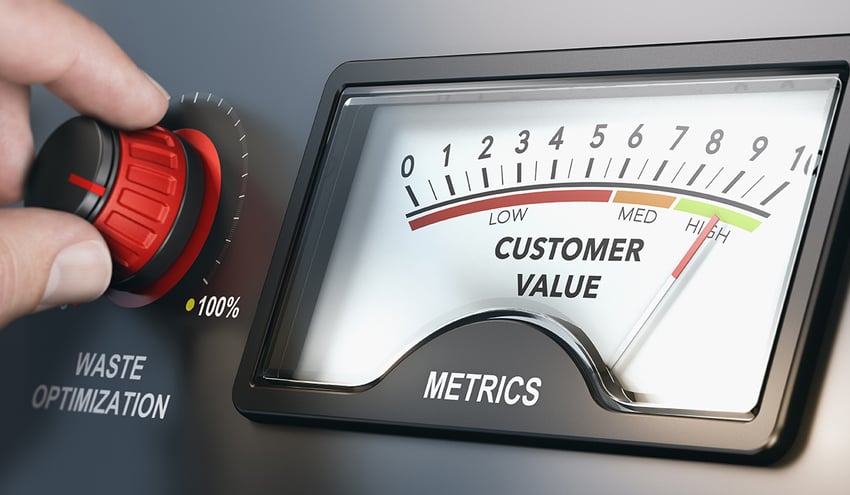Many businesses within the industrial sector are pushing for sustainable manufacturing initiatives, but one of the biggest challenges in sustainability is dealing with plastics and their disposal. Some leading manufacturers, including a number of automotive companies, are introducing a new beginning, a new lease on life in the form of post-consumer recycled plastics being used in automotive components.
While this helps meet sustainability goals, both those set internally and customer expectations, it can complicate manufacturing processes. The problem is that the surface energy of materials made with PCR plastics can vary significantly. This makes it harder for engineers working with PCRs to achieve a durable bond with paints, adhesives, and sealants.
This blog addresses the surface energy variability problem and discusses a technology that helps manufacturers of components incorporating PCR plastics maintain consistently high quality. It’s essential to first look at the role post-consumer recycled (PCR) plastics play in sustainable manufacturing, their benefits, and the challenges that result.
What is “Sustainable Manufacturing?"
Sustainability is about minimizing negative environmental impacts and natural resource consumption to satisfy current needs without taking that ability away from future generations. The manufacturing industry strives to build sustainable products and processes by incorporating environmentally friendly practices throughout its supply chains and internal operations.
Strategies manufacturing companies are adopting include reducing energy consumption, driving waste reduction, and increasing their use of renewable energy. This last point is critical regarding the materials used. Materials are an integral part of manufacturing, so in this context, the sustainability challenge is more about reusing and recycling rather than consuming virgin raw materials.
An Introduction to PCR Plastics
Plastic materials are indispensable in the modern world. Without them, everything would be larger, heavier, and more expensive. However, once used and discarded, disposal is a problem. Plastics don’t break down naturally and last forever, even if sent to landfill.
To address this aspect of sustainability, some plastics processors have developed ways to recycle this “post-consumer” waste. The general approach is to:
- Collect
- Sort and clean
- Shred and grind
- Melt and pelletize
The output from these steps is post-consumer recycled plastic. This is blended with virgin material to create a plastic suitable for molding and forming into new plastic components and products. In the automotive industry, PCR plastics are used in dashboards and other interior components.
Benefits of Using PCR Plastic
From a sustainable manufacturing perspective, using PCR plastics means:
- Reduced demand for / consumption of virgin raw material
- Less plastic going to landfill
More broadly, it gives manufacturers seeking to become more sustainable an avenue that doesn’t require moving away from plastics. As the recycling process is refined and developed, PCR plastic may also become less expensive than virgin material. For now, though, improved sustainability rather than cost reduction is the primary motivation behind its use.
Challenges With Using PCR
Despite the care with which plastics are sorted and cleaned, a degree of contamination and/or new chemicals is inevitable in PCR material. Much of this comes from the various additives incorporated into the original virgin mix, like emulsifiers and dyes. Many of these are designed with low molecular weights so as to migrate to the outside of the molded plastic form. Once there, they can cause a “blooming” effect that impacts the surface properties and surface energy. This variation in surface properties can negatively impact the end product's performance.
Surface energy determines the propensity of a surface to form bonds with substances placed on it. Polymers intrinsically have low surface energy, which makes it hard for paint or other coatings to form high-performance bonds. This is addressed by plasma, flame, or corona treatments that alter the surface energy and promote stronger bonding.
The problem with PCR plastic is that surface energy can be highly variable. This is especially true between batches, and it creates challenges for the product’s lifecycle and the manufacturer who needs to paint, seal, or bond to the PCR material. A setup that works on one batch may not work on the next, which risks quality and durability problems unless the manufacturer tests continuously and rigorously to determine surface energy levels.
Overcoming the PCR Plastic Challenges
Consumer expectations for manufacturers to become more sustainable in their manufacturing operations will not diminish, so businesses can’t give up on using PCR plastic. Instead, they need a way to deal with the additional variability this material injects into their production processes. This solution comes in two parts:
- Intelligent technology tools with enough resolution and repeatability to be useful.
- A means of communicating surface energy information across the supply chain so every step can be adjusted as needed.
While dyne testing served as the industry standard for assessing surface energy, concerns about its environmental and human health risks have led to the development of safer, alternative methods. In addition, dyne testing provides only a broad indication rather than quantification and lacks the resolution needed to detect variations due to blooming. In addition, because many of the blooming agents are soluble in dyne solutions, dyne inks cannot show the user whether they have a contamination issue or not. Water contact angle, however, has both the resolution and the required repeatability. Brighton Science has a range of equipment for measuring this on a sample basis and through continual automation.
Once surface energy can be quantified, that information must be shared upstream and downstream. Surface energy measurements dictate the implementation of a track-and-trace system where surface energy measurements are associated with individual batches of material, and processes are controlled to create surfaces with energies between acceptable limits. Or, to put this another way, the water contact angle can provide a common language that's easy to understand among customers and suppliers, internal and external, to use throughout the supply chain.
Rethink your adhesion manufacturing processes with Surface Intelligence.
On the Road to Increased Sustainability
Sustainable manufacturing is a competitive advantage and a worthy goal, but the use of post-consumer recycled plastic material creates challenges that weren’t there before. When plastic parts are made from 100% virgin raw material, their surface energy is stable and predictable, and adhesion and bonding processes perform with good repeatability.
PCR plastic disrupts this situation. Addressing this challenge requires engineering teams to carefully study the product design, refine their surface treatment, coating, and bonding processes, and become more agile to handle the increased variation.
It’s worth noting this is not a unique situation. Periodically, process changes are mandated or instigated by customer or consumer pressure, and engineers need to work out how to adapt. Typically, there’s a period of disruption, after which an improved steady-state is reached. The switch to solvent-free paints in automotive manufacturing and elsewhere provides an example. That change was difficult, but today, we’ve made environmental improvements, both inside the factory and outside, and the modified processes are stable and well-controlled.
The adoption of PCR plastic will almost certainly follow the same pattern.
To learn how your manufacturing operation can leverage intelligent technology to meet sustainability initiatives, download the eBook “The Sustainability Advantage: How Eco-friendly Practices Can Make You More Efficient, Productive, and Profitable.”

